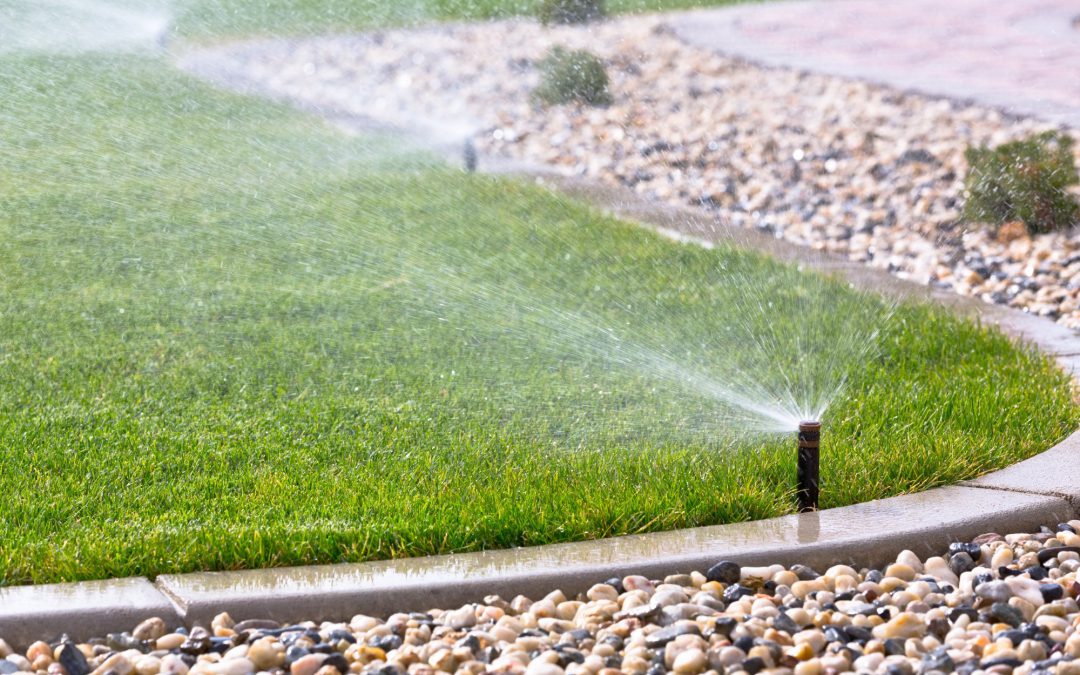
How to de-winterize Sprinkler System
How to de-winterize Sprinkler System
So how do you winterize your sprinkler system and why do you have to do it? While winter is a time for everything to freeze, springtime means it’s about time to start up your sprinkler systems again.
Warmer weather conditions can make grass and plants wither, which is why you must have your whole sprinkler system working. However, when you do so, you also need to do it right away to avoid damaging pipes and irrigation components.
Today on the blog, we will tackle some steps to ensure that you get your sprinkle system back to work.
Step 1: Slowly open the main water valve to the system
Opening the valve slowly fills the pipes with water. The speed of how you open it matters because if you open them too quickly, the water can put a high surge of pressure on your main lines. The uncontrolled flow of water can instantly damage the pipelines doubling your work and financial liabilities.
If you’re not aware of the valve location, try to look in your basement. You should be able to see piping coming into the home near the ground level. This piping should have a single shutoff valve – this is the valve that we are looking for.
The valve resembles a ball form with a lever-type handle. If you see another large water pipe coming from the ground level, this is probably your home’s main water supply. So don’t touch it because it is not the valve we’re looking for.
STEP 2: Manually Check each zone and activate
We always suggest not making everything rush. Many homeowners who try to bypass the process in de-winterizing sprinklers have encountered issues like pipes breaking or valves malfunctioning.
Since winter can also cause issues to your pipeline, springtime is your best chance to check on these problems. First, verify the proper operation of each station valve. Spot issues in the areas. Some valves may have tilted or sunk.
Also, walk through and check each zone whether they are functioning as they should. Is there a low pressure in your sprinkler system? Then, maybe you have broken a line.
Also check for proper rotation, clogged areas, clogged filters, and poorly performing sprinklers. When you spot some issues, you have to remedy them right away.
Every time you remedy a problem, that is also the perfect time to activate the zone.
Step 3. Reprogram the controller
Reprogram your sprinkler system controller for automatic watering. If you are using a battery, you may need to replace it when needed. It is a good idea to set watering times depending on how much you want to water your plants.
If you are using a sprinkler for your lawn, you can set the timer once during the day and in the afternoon for the whole springtime duration. This is enough to keep your grass green all through the springtime. If you have a larger plantation, you may need to adjust accordingly.
Remember, when the warm weather gets going, will your grass grow rapidly with a sprinkler system. Check your lawn regularly to make sure it receives enough water to keep it healthy. If you have a movable sprinkler, monitor the time when you need to transfer it to water another part of your lawn.
Step 4. Uncover and clean the weather sensors when applicable
Not all sprinkle systems include this component. However, if your sprinkle system has this feature, make sure that it is working effectively. Weather sensors are features in modern sprinkler systems that automatically shut the sprinkle off and stop it from watering during wind, rain, and freezing weather.
This is a very useful tool, especially if you are not always around in your home. That means when the sky suddenly turns gray and the rain starts pouring due to a cyclone or storm there’s no need for you to manually turn off your sprinkle. The sensor itself can spot the weather condition and prevent your sprinkler from watering the grass or plants.
Step 5. Get Ready to Water!
Once you have corrected all the issues in your water sprinkler, it is time to water. First, test your sprinkler and adjust spray patterns.
Keep an eye on the watering for the first time that you have de-winterized it. Make sure everything is working properly.
It is possible that during this time, some caps and damaged sprinkler heads can pop. You probably have not seen them when you checked on them. Even so, you must ensure your sprinkle is 100% de-winterized. When watering, make sure your lawn receives equal water so your plants remain green. Additionally, it is a good idea to soil during Spring. It helps the water and air to reach the root system and keep your plants or grass sturdy and strong amid the heat of the sun.
How To Prevent Sprinkler System Water Hammer
The most important thing to note when de-winterizing your sprinkler system is to turn the water slowly. This prevents “water hammer”, a condition that happens when a sudden change in water pressure escapes from the sprinkler. It occurs when you suddenly turn on the sprinkler and a sudden surge of water comes out.
This water could strike anywhere. Since the pressure is too strong, it could dig a hole in your lawn or even strike you. You will know when the pressure is strong because there is a noise inside your sprinkler, which is the water slamming against the inside of your sprinkler.
You must follow the steps above to ensure safety for everyone in your home, especially if you have a larger sprinkle.
Sprinkler System Maintenance
De-winterizing your sprinkler system is crucial. Since you need to do this every springtime, you must have a caring plan in place. Maintaining your sprinkler system can keep it functioning at its best.
If you do not know how to winterize or de-winterize your sprinkler system, do not hesitate to call out a professional maintenance team to help you. A professional can look after your sprinkler system properly.
Home Pro Partners
Skilled laborers... publish a Home Pro Partner profile and invite trusted referral partners to your company profile.
Reach new customers with Home Pro Partners, no lead fees, no gimmicks, no hassle.


Recent Comments